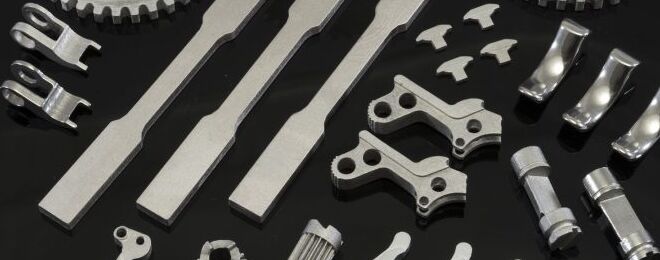Additive Manufacturing (AM) or 3D printing, although now over 30 years old, is still a relatively new family of processes. Indeed it is not yet fully integrated in many industries, and in firearms manufacturing, we tend to see it sparingly, mostly for niche products. Moreover, many customers, and manufacturers alike, tend to be fully aware of the limitations, real or perceived, of AM processes and believe that they are more suited to prototyping than production.
With these premises, it’s no surprise that when employed, AM gets a center stage on marketing material. So, what if we told you that one of your recently bought firearms may have 3D printed components? What if we told you that one of the first companies to adopt additively manufactured parts is Charter Arms? You would likely think we’re joking, but we aren’t. Enter 3DEO.
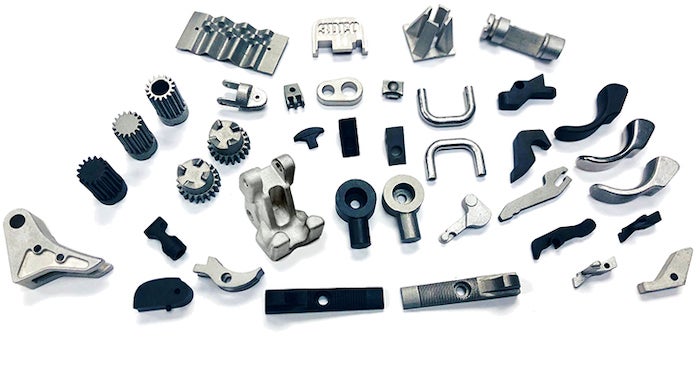
3DEO: The 3D Printing Marketers Don’t Tell You About – A selection of parts manufactured by 3DEO, several of them are clearly firearms related.
3DEO: The 3D Printing Marketers Don’t Tell You About – Table of Contents:
- Intro and a Quiz
- The Company
- The Process – Intelligent Layering Technology
- Applications in the Firearms Industry
- Future Possibilities
- The Answer
1. 3DEO – Intro and a Quiz
We thought of looking into this company when we read that they received an industry award for a small component manufactured in high volume (here you can read their press release). The part, a relatively complex mechanical piece called “Anchor Link”, is shown here below. The TFB team immediately and instinctively identified it as a firearm component, however, we were unable to tell which gun was its host.
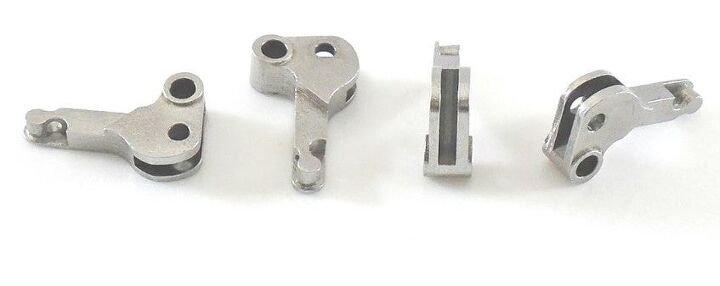
3DEO: The 3D Printing Marketers Don’t Tell You About – The award-winning Anchor Link.
While asking about the part, we took the chance to learn more about 3DEO and we got the opportunity to have a chat with its President, Matt Sand. He kindly answered our questions and we hope you’ll find this overview as interesting as we did.
The quiz for you: can you identify the firearm the Anchor Link comes from?
There’s nothing to win and the answer will be at the end of this article; still, challenge yourself and let us know your guesses!
2. 3DEO – The Company
3DEO is a young organization based in Los Angeles, California. It was founded in 2016 around a patented, proprietary, manufacturing process. Unlike most ventures in the AM field that aim to sell equipment to consumers or industry clients, 3DEO focused on employing the technology internally, becoming a part supplier. To do so they equipped their 10,000 sq. ft facility with several printers built on their design, selected a metal with a wide range of applications and started to offer their services to a multitude of industries.
The choice has paid off and the company recently celebrated the milestone of 150,000 parts shipped.
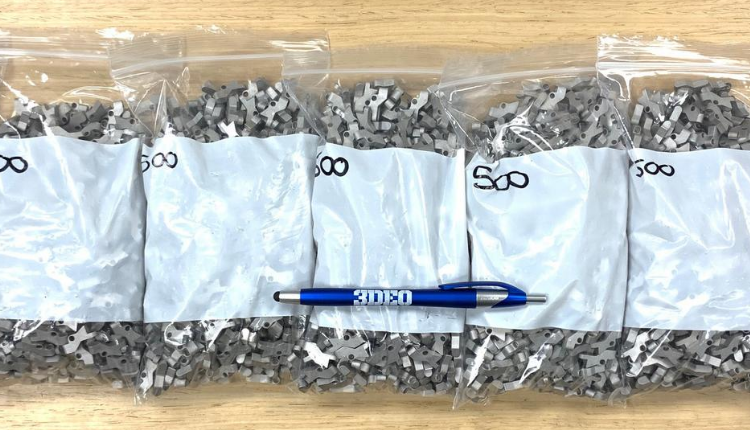
3DEO: The 3D Printing Marketers Don’t Tell You About – 3,500 bagged bolt action rifle bolt release pieces.
3. 3DEO – The Process – Intelligent Layering Technology
TFB readers are now familiar with several 3D printing technologies, namely Selective Laser Melting (or Sintering for polymers), Stereolithography (SLA) and of course the now ubiquitous Fused Filament Fabrication (FFF or FDM). The underlying technology of the “Intelligent Layering” approach is similar to a fourth process: Binder Jetting (BJ). In BJ, similarly to SLM, a bed lowers down as it is progressively covered with a thin layer of powder feedstock. Here there is no energy source at play: each “slice” of the part is obtained by selectively depositing binder on each layer through a system comparable to an inkjet printing head. Once the object is completed, it is placed in a furnace where the binder will burn off and the material will sinter into a solid, shrinking considerably while its density increases, approaching that of wrought metal.
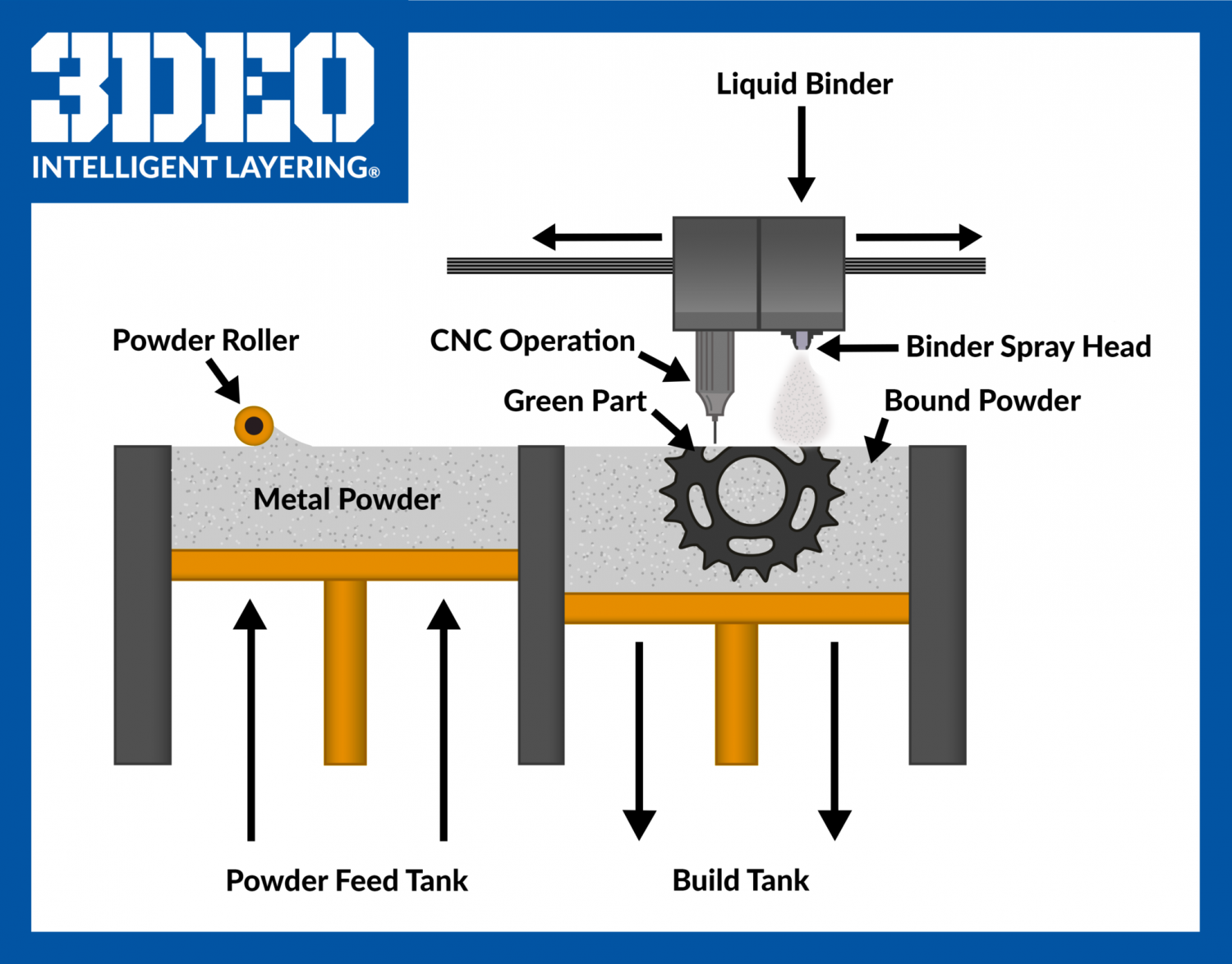
3DEO: The 3D Printing Marketers Don’t Tell You About – The basics of 3DEO patented manufacturing process.
So, how does the 3DEO system differ from BJ? In a few ways that make the full process more cost effective:
- there is no selective jetting of the binder, the full layer is sprayed with binder;
- a micro end-mill carves out the shape of the object, layer by layer;
- once the build is complete the parts are removed from the surrounding scrap material (bonded as well).
Sintering is then performed in a furnace with a short (compared to MIM) initial de-binding phase, that burns off the binder, and a longer dwell time at a higher temperature. Shrinking happens just as in BJ and MIM and the final density is claimed to be in excess of 99%.
The process offers very good accuracy and surface finish, as the steps left by the layering build are removed during the milling phase. On top of this, the combined use of well-proven technologies allows for a system cheaper than the competition in manufacturing, control and maintenance.
4. 3DEO – Applications in the Firearms Industry
3DEO chose to focus on the precipitation hardening stainless steel 17-4PH, a metal suitable for several firearm components. The machines in the facilities would be able to print parts up to the “size of a volleyball”, to quote Matt Sand, but the company found a sweet spot for value in small components with complex shapes.
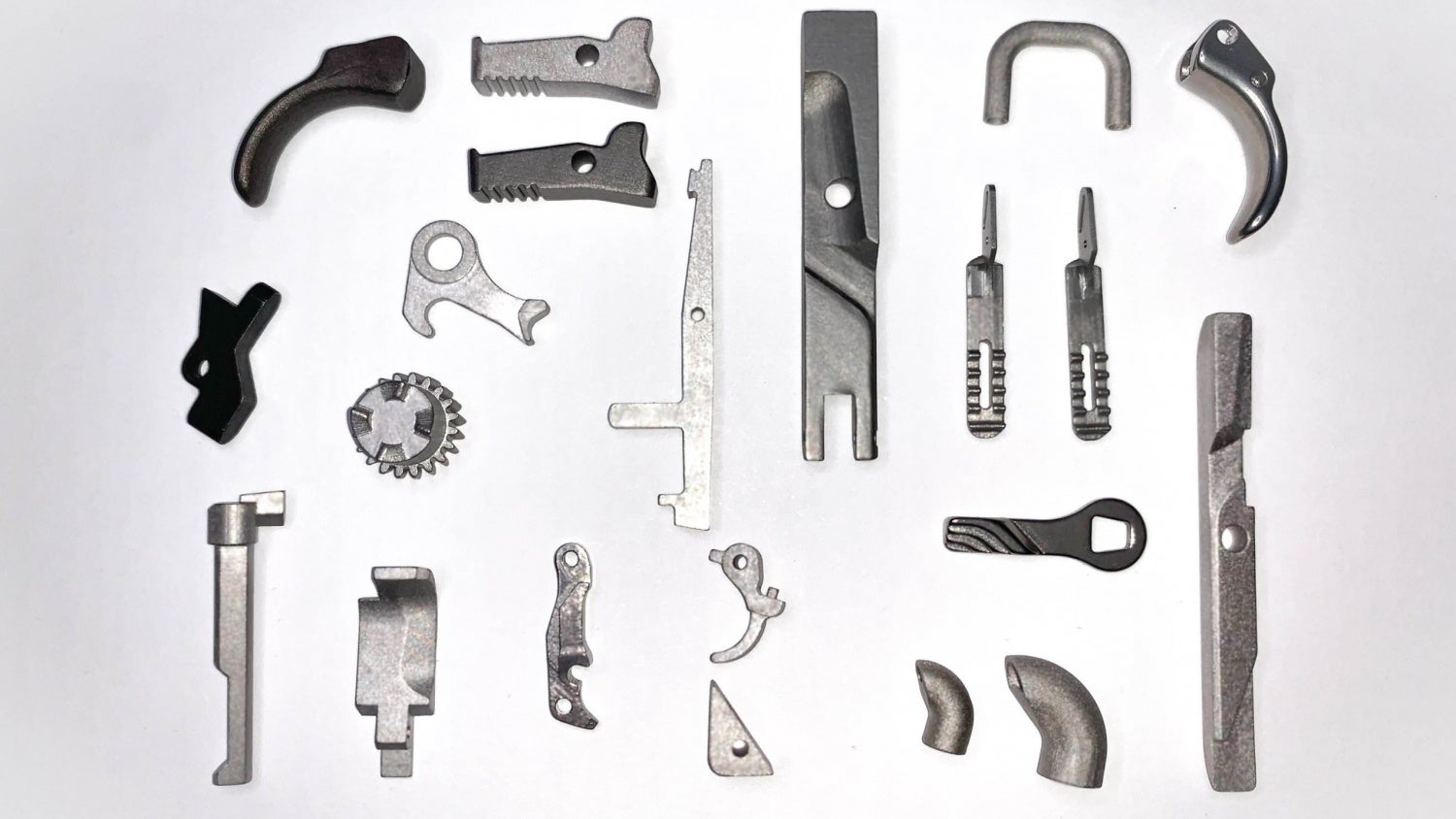
3DEO: The 3D Printing Marketers Don’t Tell You About – Another selection of products with several firearm components.
Looking at the photos on 3DEO website, most TFB readers will identify 1911 hammers, triggers, extractors, ejectors, sights, sears and other familiar parts. The company does not compete against other AM technologies, but mainly against CNC and MIM (which employs the same powder feedstock).
Firearms manufacturers with very high volume production may find it convenient to have smaller components manufactured by MIM, and this is usually true when more than 25,000 parts/year are required. However MIM, due to the high cost of tooling, and relevant restrictions on design flexibility, is not an efficient option for lower volume manufacturers. CNC milling becomes the traditional alternative.
3DEO, claiming to offer higher quality than MIM, provides a third option. With their process, they can accommodate production requirements ranging between 100 to 10,000 parts/month.
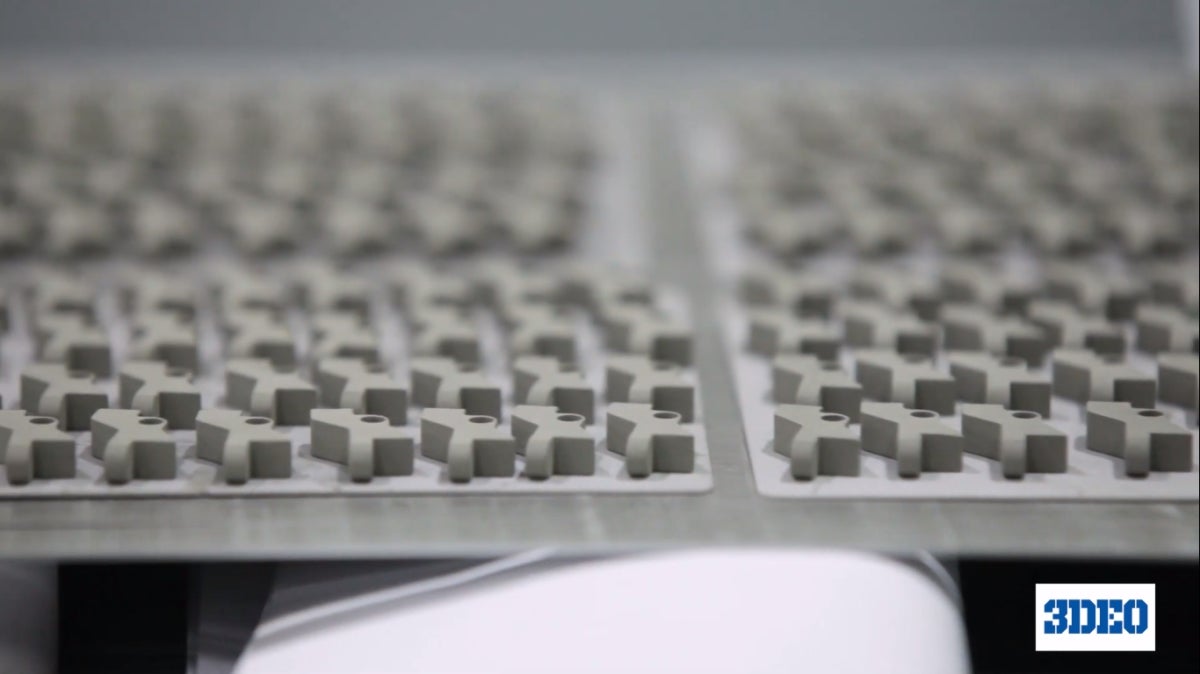
3DEO: The 3D Printing Marketers Don’t Tell You About – As printed bolt release pieces, ready for sintering.
Besides the mystery product above, a good example is the bolt action side bolt release featured as a case study. We are not told who is the firearm manufacturer employing this component, but their product is a bolt action rifle, possibly based on a modified Remington 700 pattern. The part appears simple at a glance, and it can definitely be CNC machined, but, as this video from a gunsmith shows, it is not an easy operation performed in one step.
In this complexity lies the competitiveness of AM in general and the Intelligent Layering process in particular.
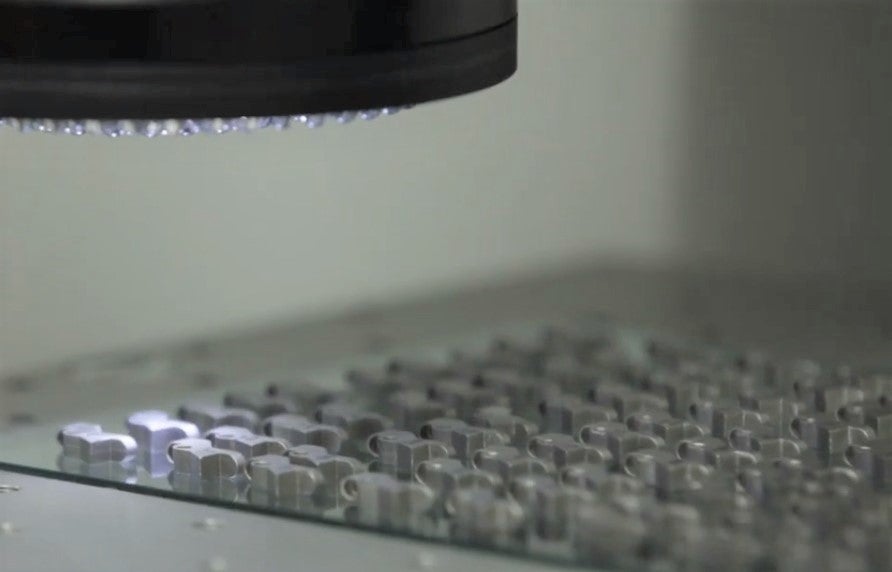
3DEO: The 3D Printing Marketers Don’t Tell You About – Sintered bolt release pieces undergoing quality checks.
Another trait the technology shares with most AM processes is flexibility: according to Matt Sand, 3DEO has already delivered 3 iterations of a design in a matter of 2 weeks. This is because changes can be implemented in the 3D model of the part and quickly converted into code for the printer.
An interesting case study shown by the company is a front sight for a Charter Arms revolver. While the part itself is very straightforward, the fact that it equips a budget handgun highlights the competitive edge of the process.
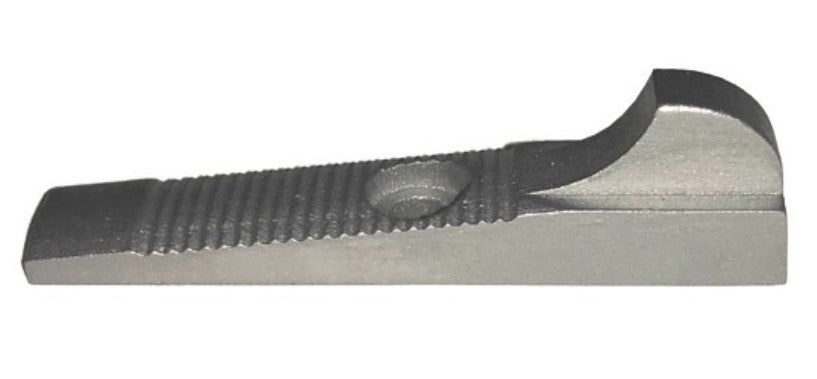
3DEO: The 3D Printing Marketers Don’t Tell You About – Revolver front sight.
5. 3DEO – Future Possibilities
As TFB readers are well aware, in these months the demand for firearms is at record high levels. This has put many companies in the position of being unable to fulfill the demand and this applies to 3DEO as well. They are however completing a move to a much larger facility and they plan to start manufacturing parts in 4140 steel in about six months from now.
The fluctuation of demand in the market is one element that Matt Sand sees as favoring their offer. The limited physical setup and lack of tooling allow 3DEO to easily meet changing production requirements, therefore they don’t force their clients to commit to fixed output over any given period.
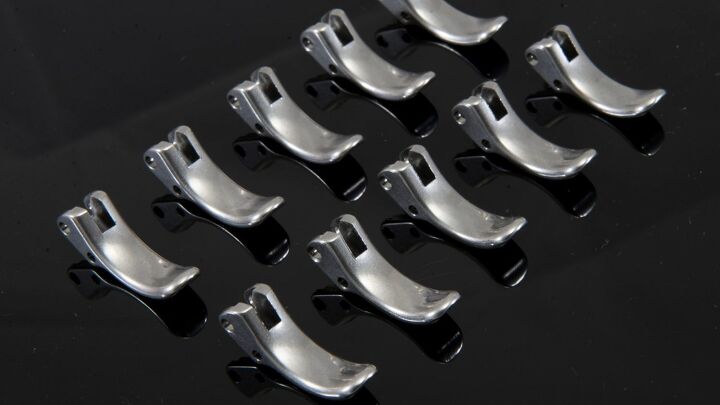
3DEO: The 3D Printing Marketers Don’t Tell You About – Polished triggers, most likely going into the same host of the Anchor Link.
As we said this is an application of AM which doesn’t reach the marketing materials as it’s not as flashy as the mesmerizing show of a laser progressively building up a part. This looks more like a silent revolution focused on delivering actual production value at scale. We could say that 3DEO has made AM as mundane as any other manufacturing process, and this is quite an accomplishment.
We will most likely see parts manufactured with this process in more and more firearms, both of legacy and new designs. The former will benefit from the advantage of having a flexible, 100% U.S. based supply source, commercially competitive with foreign alternatives. New designs will be able to leverage better the full potential of the technology and ideally, this will promote innovation. You’ll see below in the answer to the quiz how the process can help in making a peculiar product commercially viable.
6. 3DEO – The Answer
The Anchor Link is a component of the Bond Arms Bullpup 9 pistol. Specifically, it is the bottom part of the link chain connecting the DA hammer to its return spring inside the backstrap of the grip.
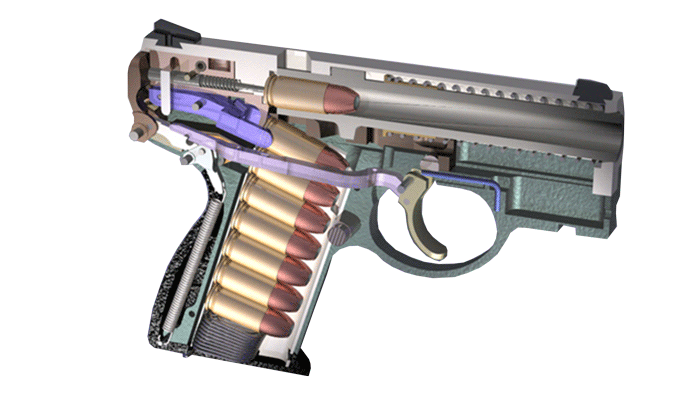
3DEO: The 3D Printing Marketers Don’t Tell You About – Animation showing the peculiar internals of the Bond Arms Bullpup 9. You can see the “Anchor Link” connected to the spring in the grip and pivoting on a pin through the frame. (Image Credit: Bond Arms)
Did you guess it right?
All images are courtesy of 3DEO unless otherwise stated.
 Your Privacy Choices
Your Privacy Choices
